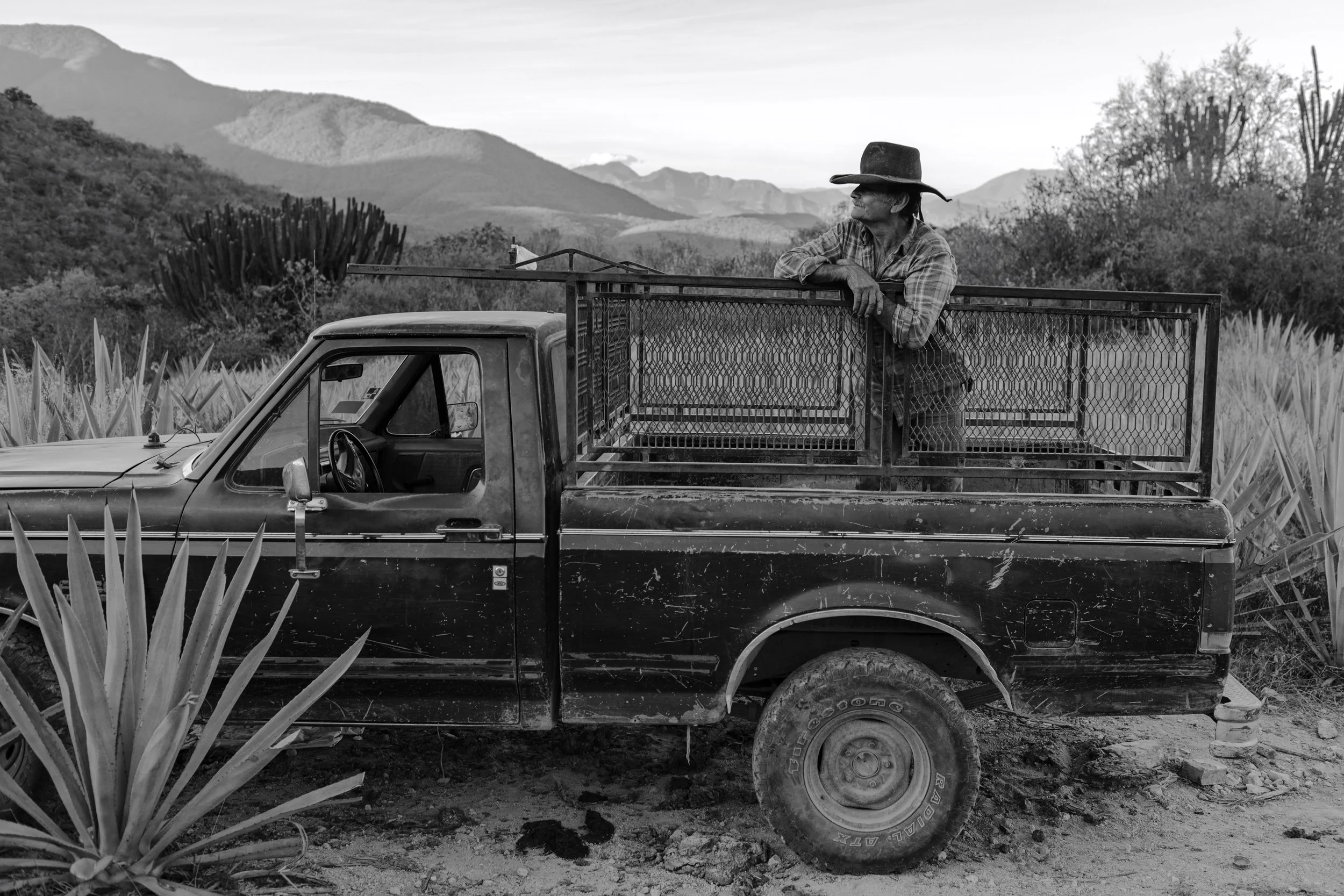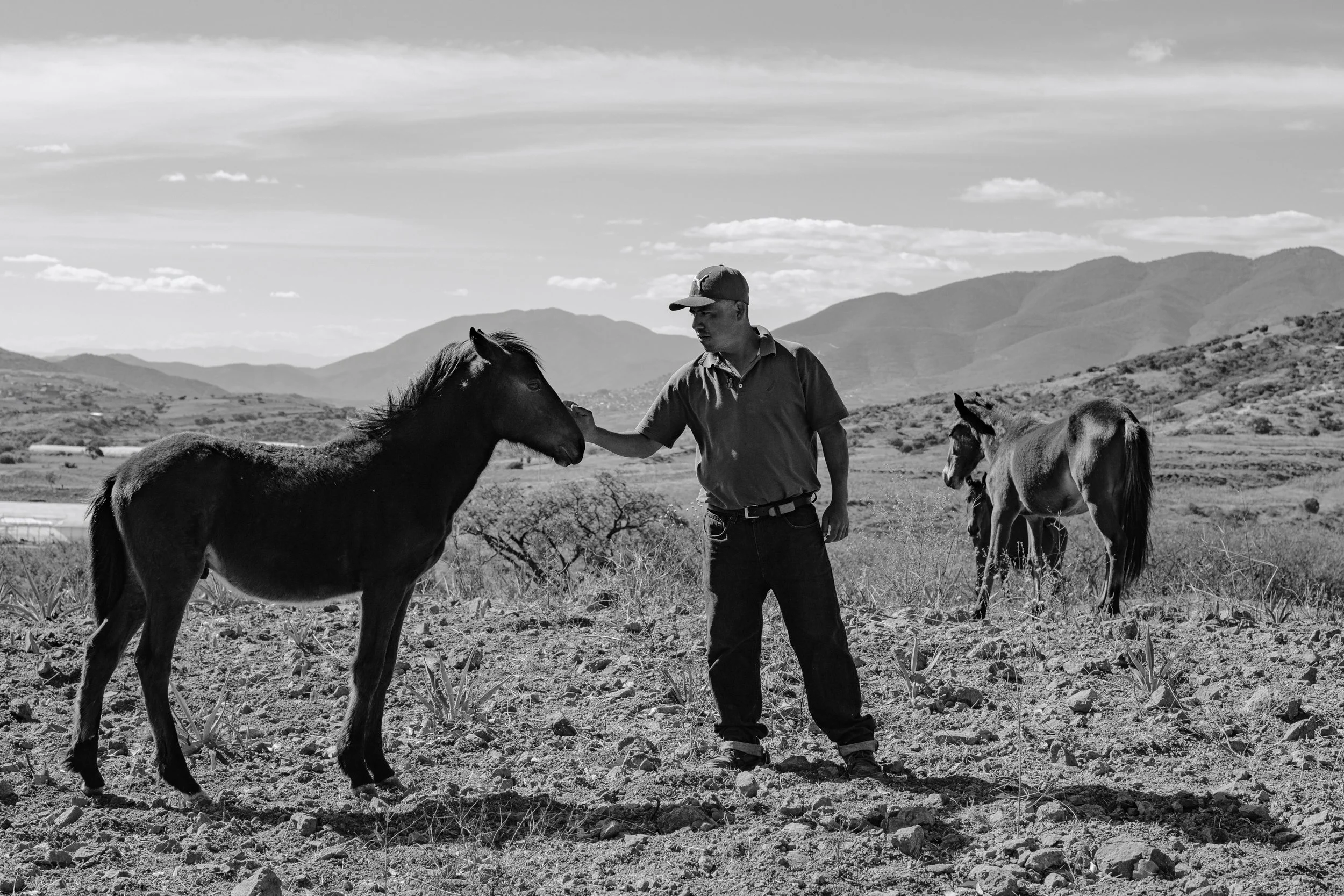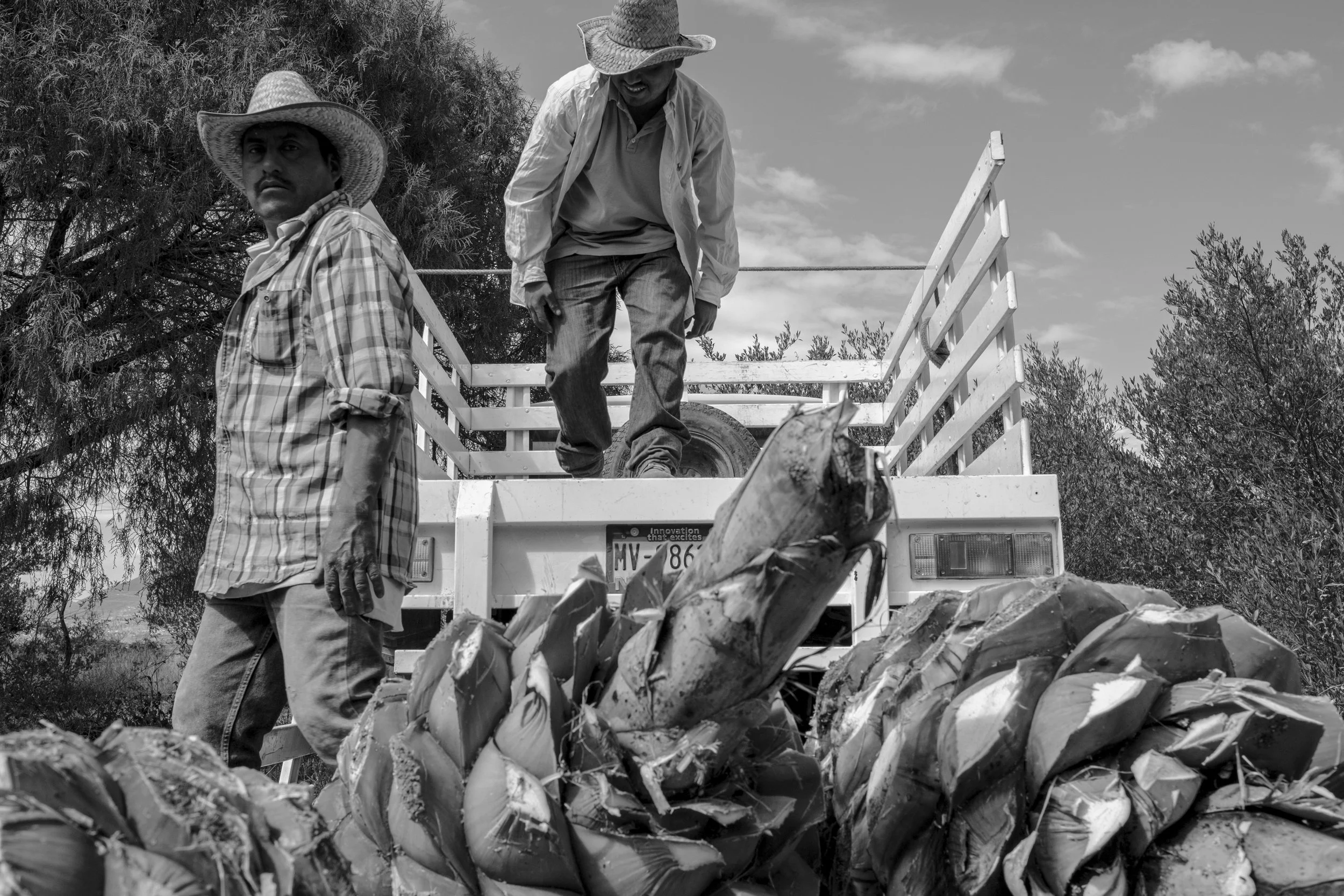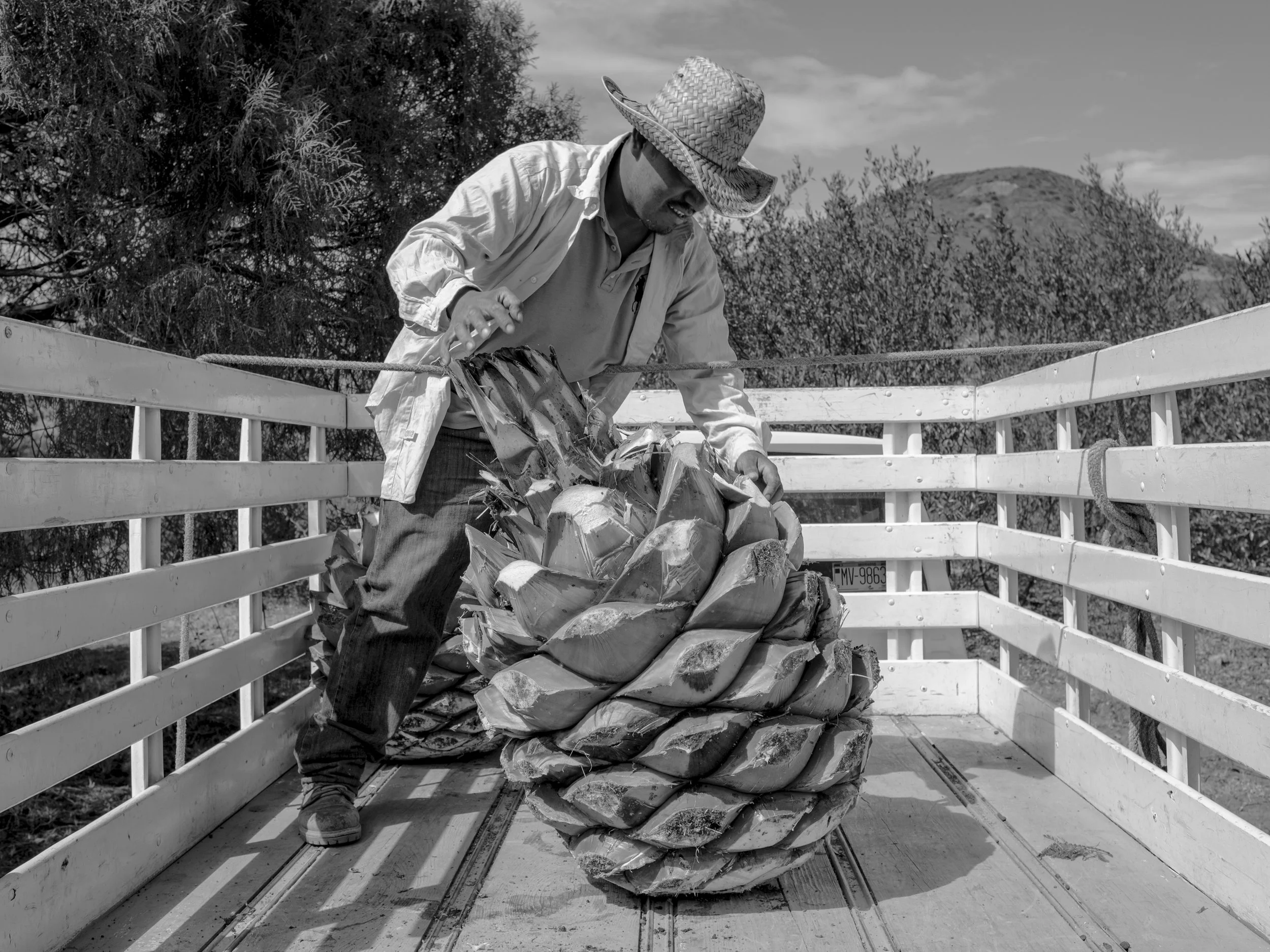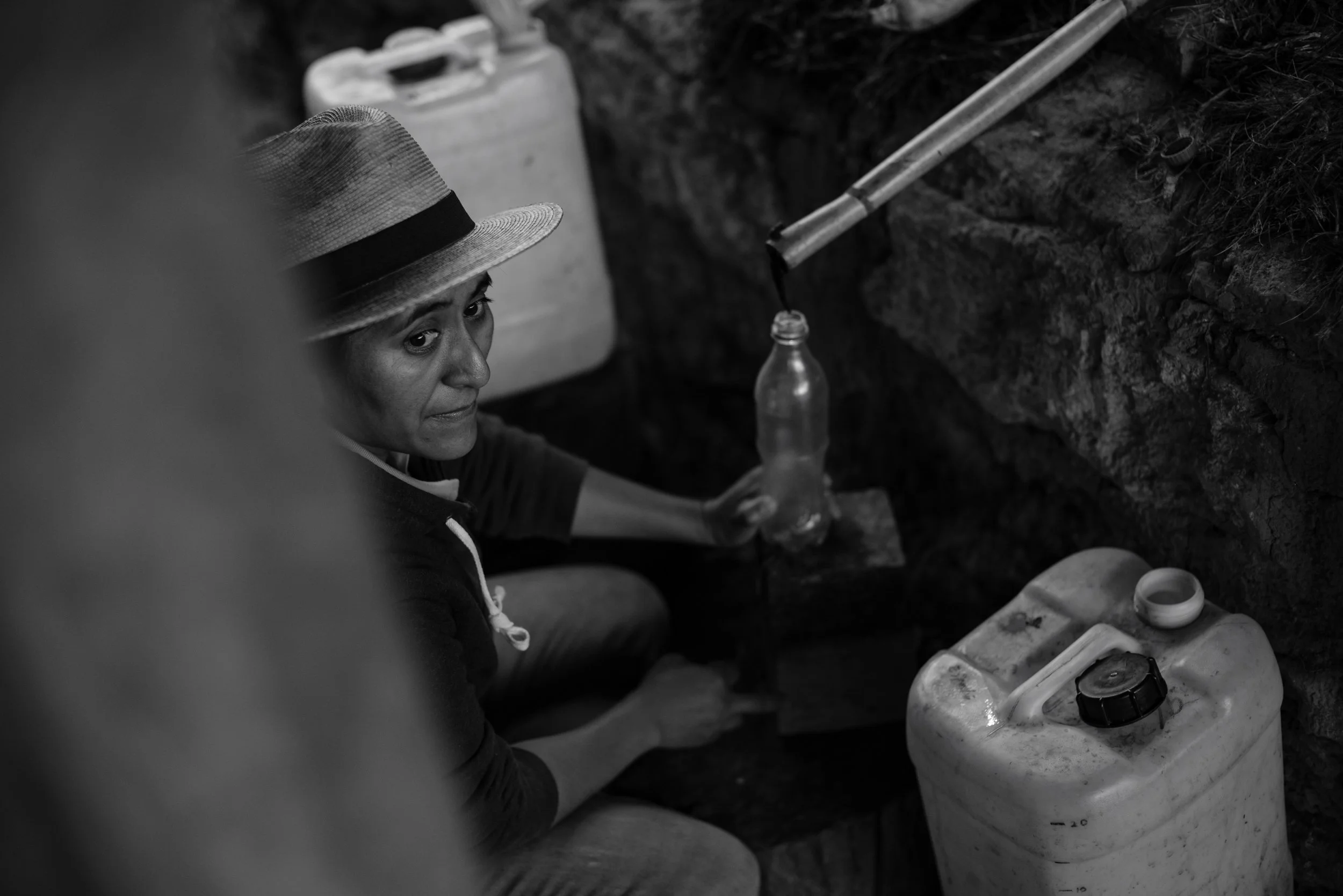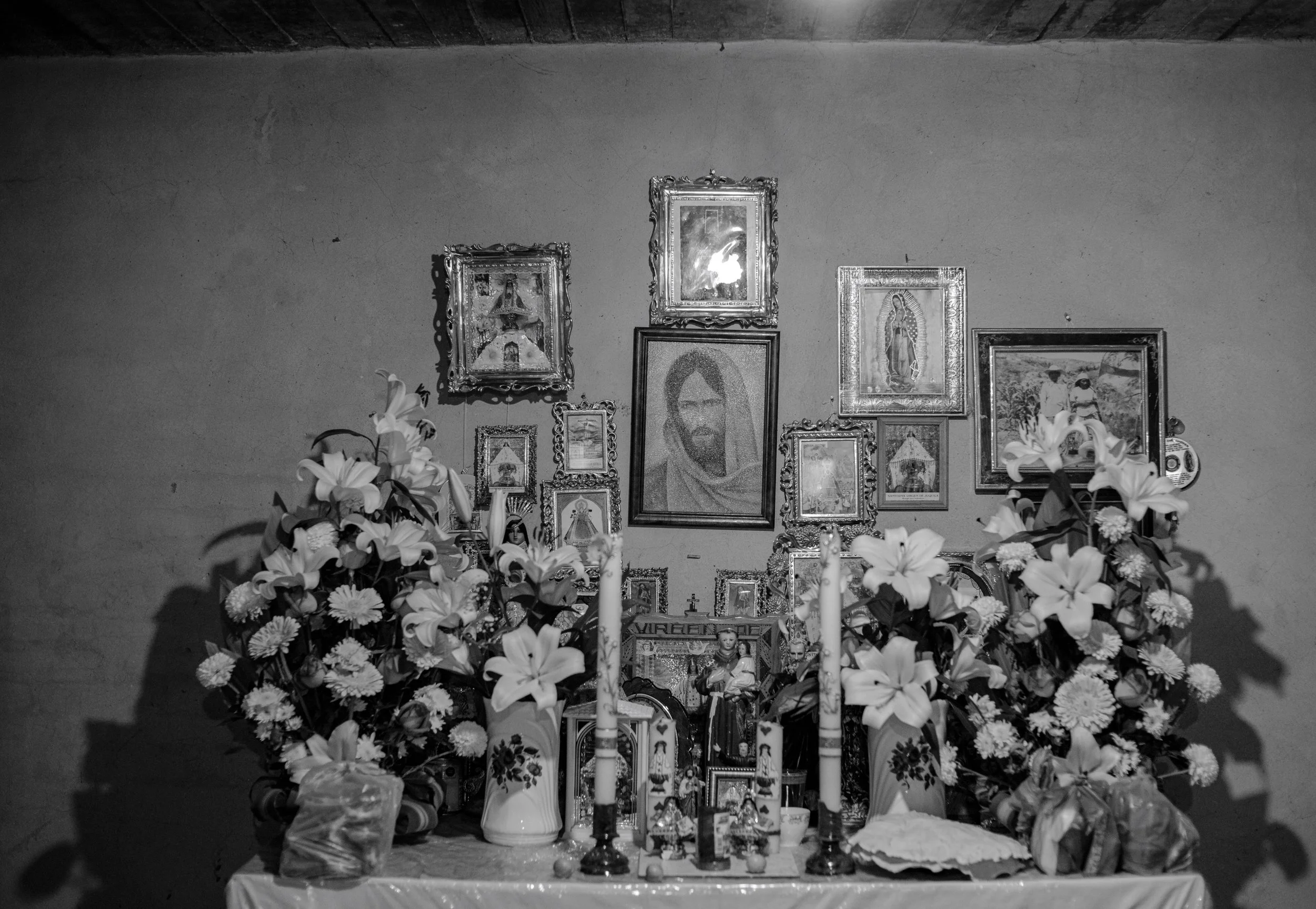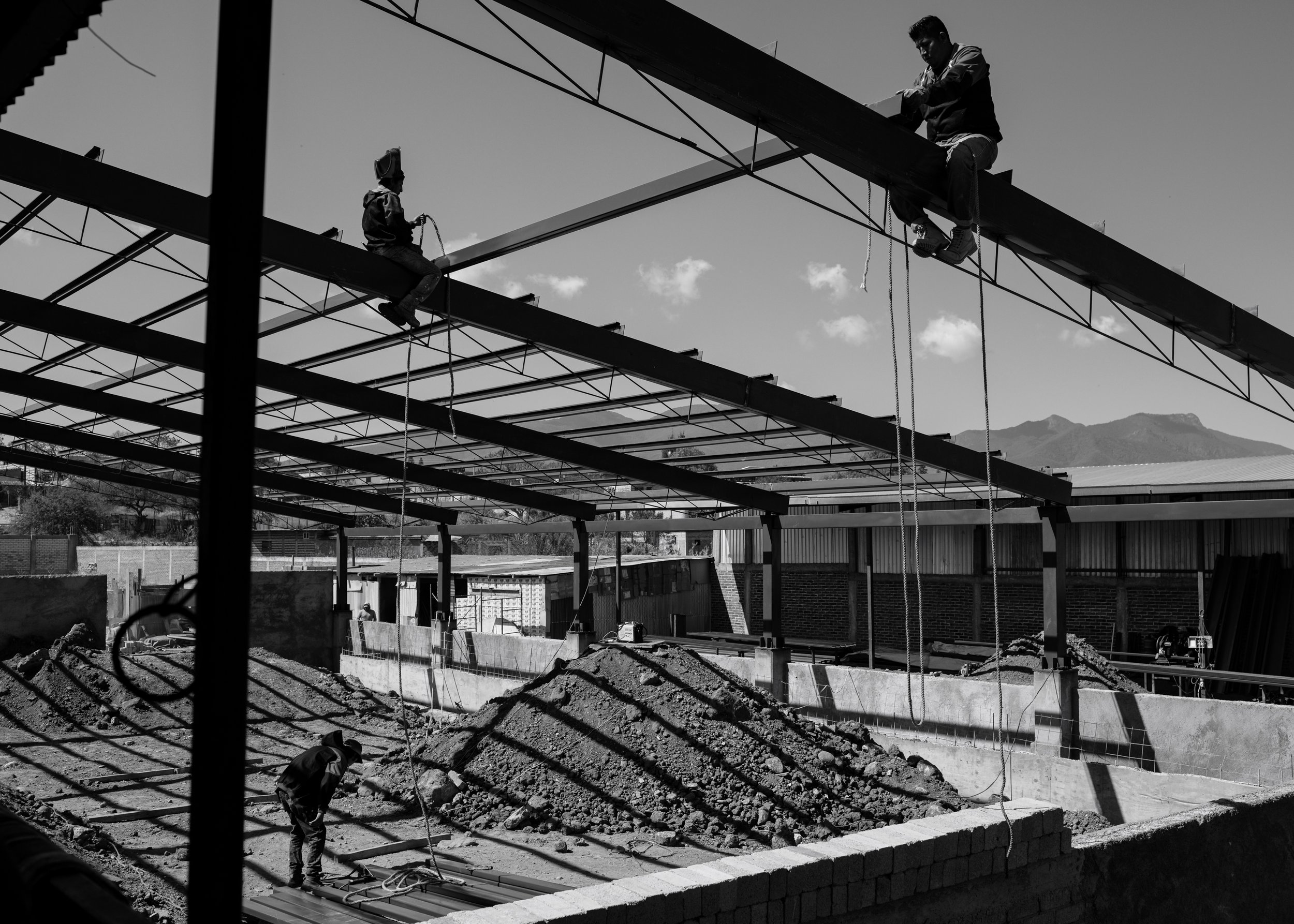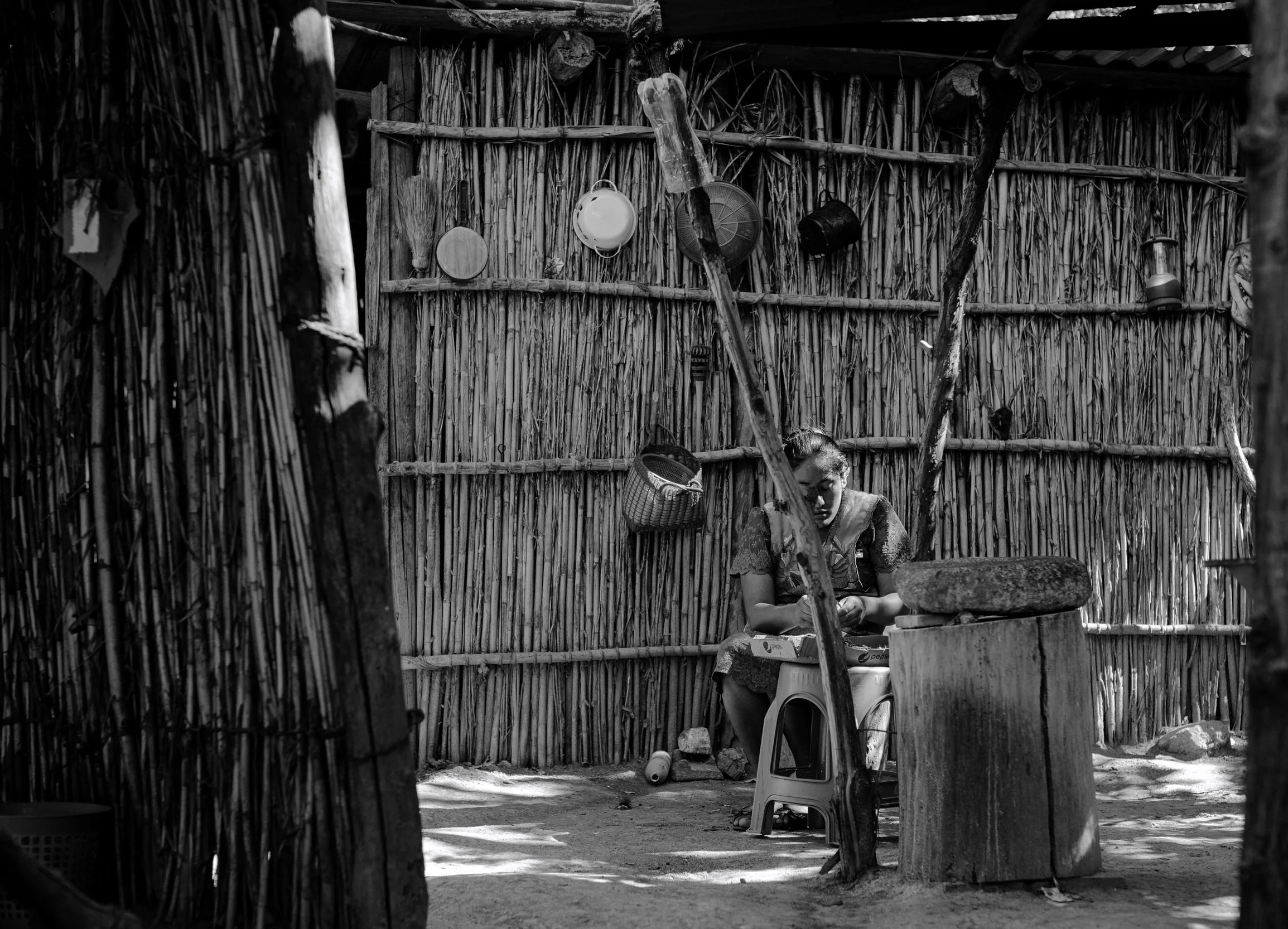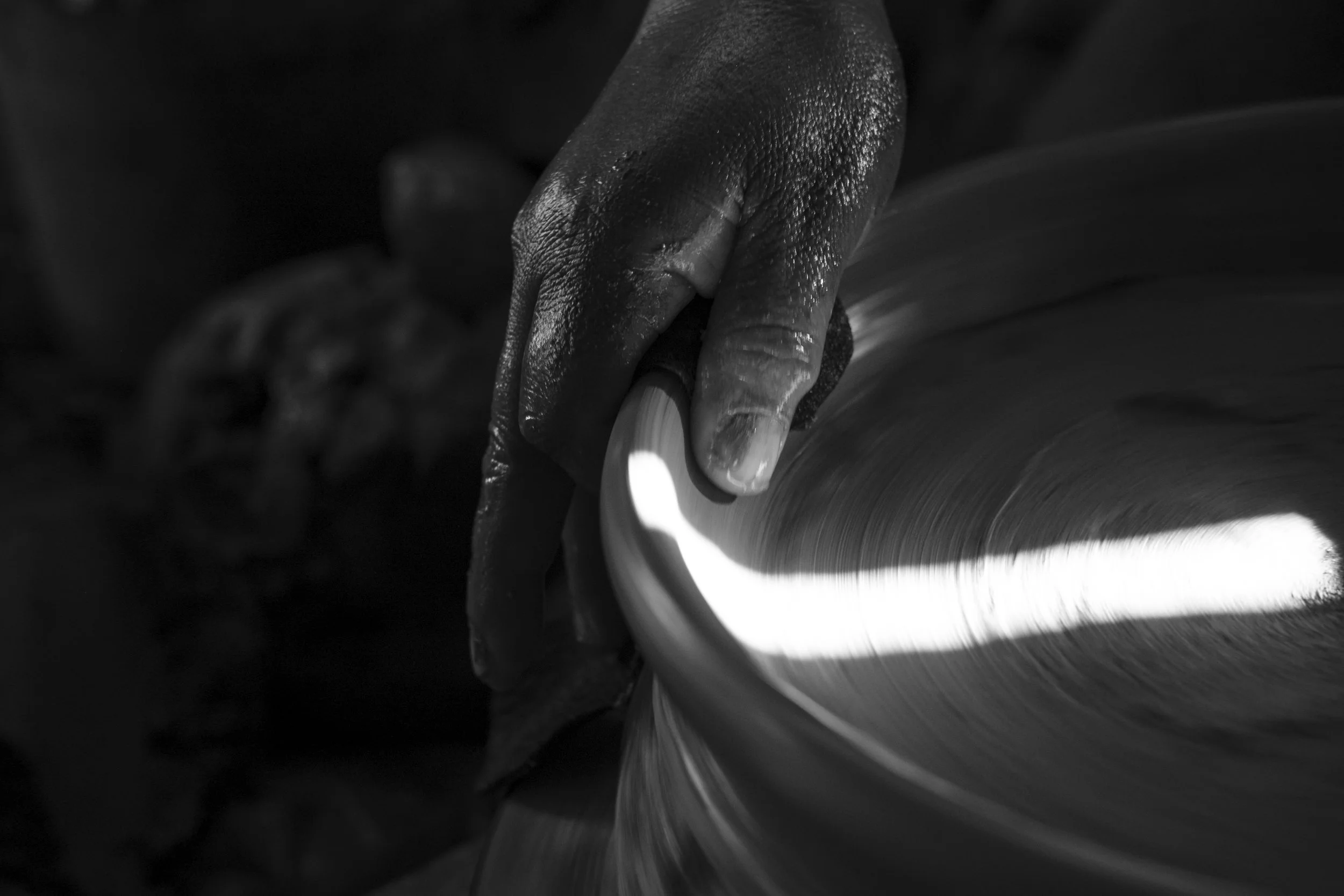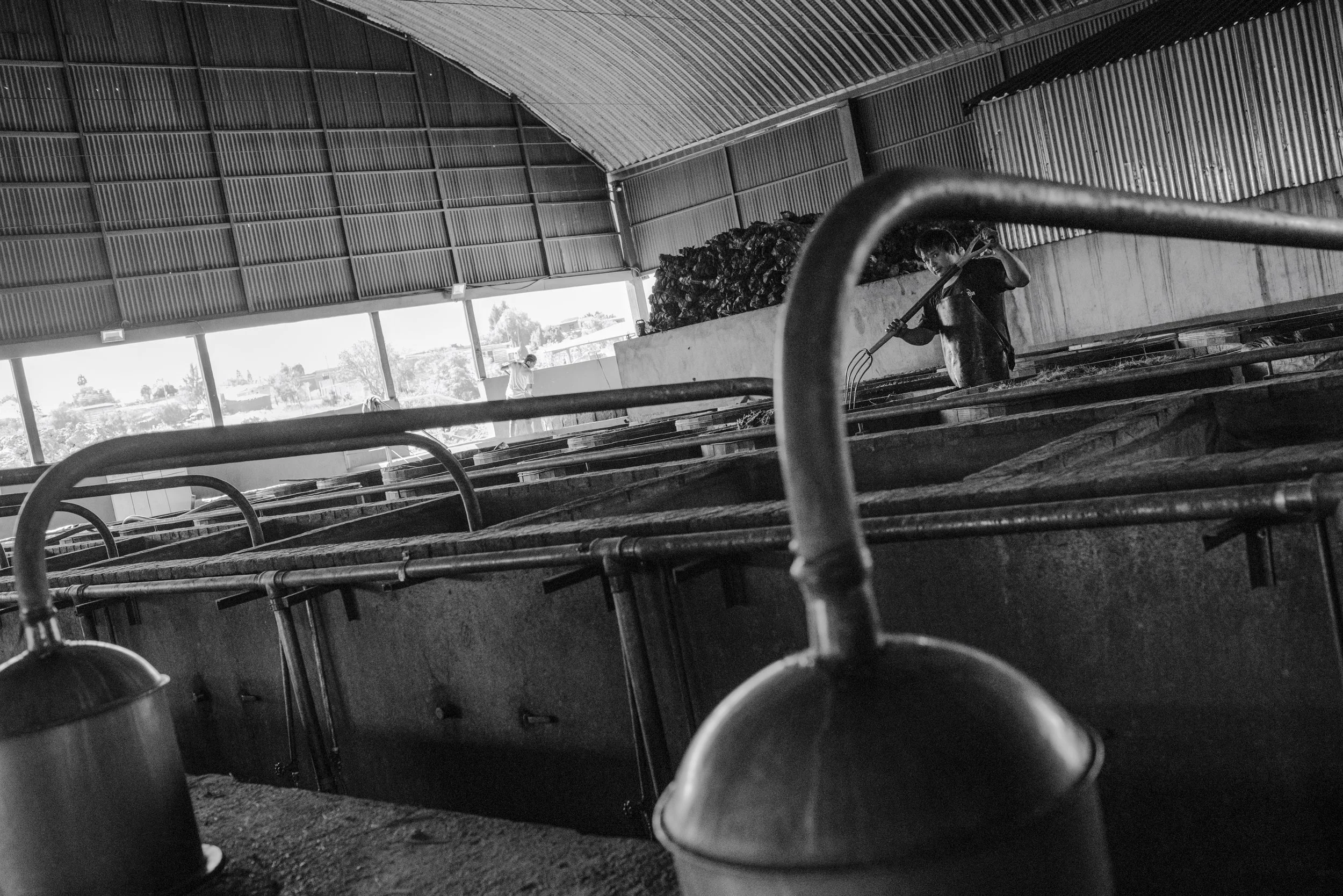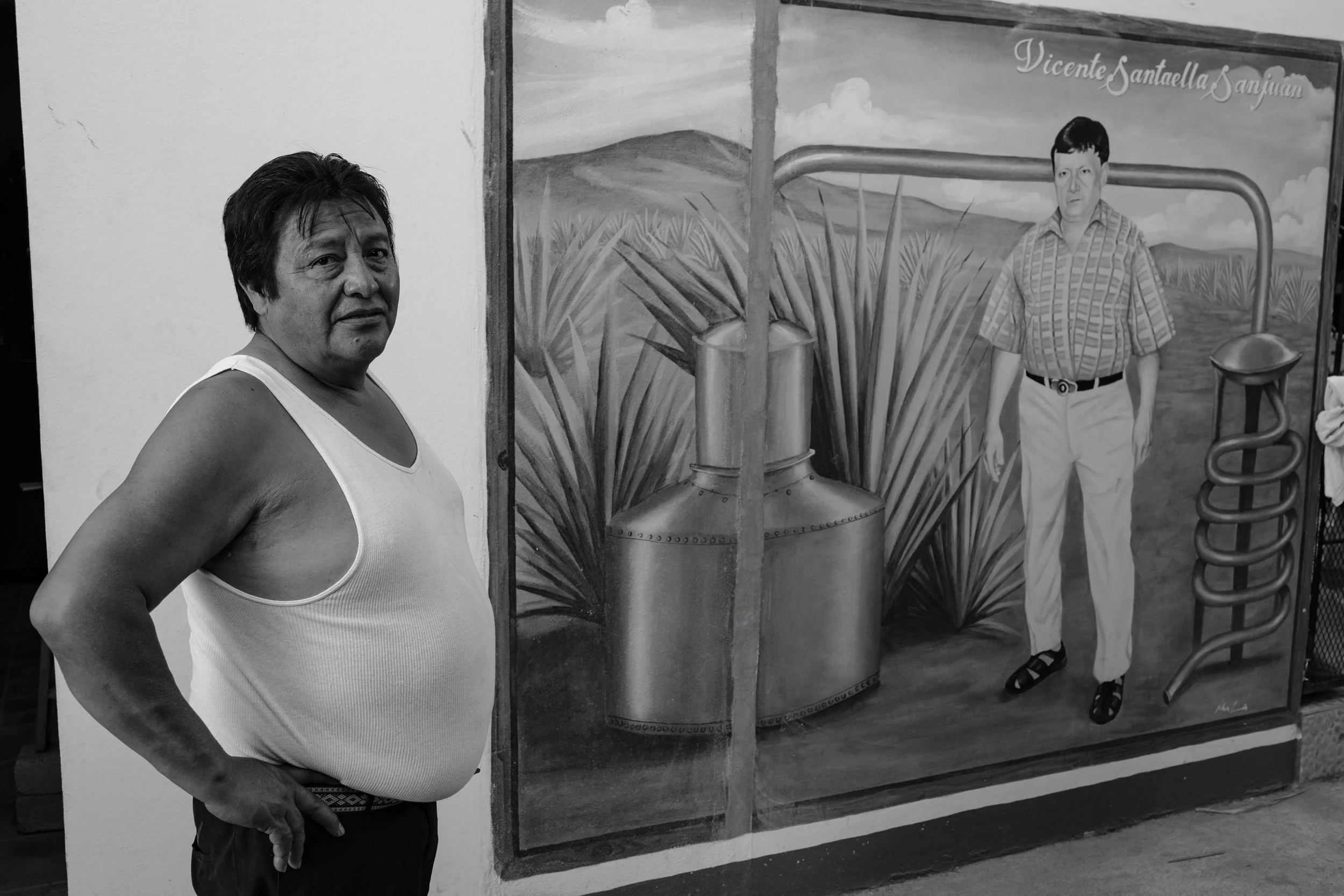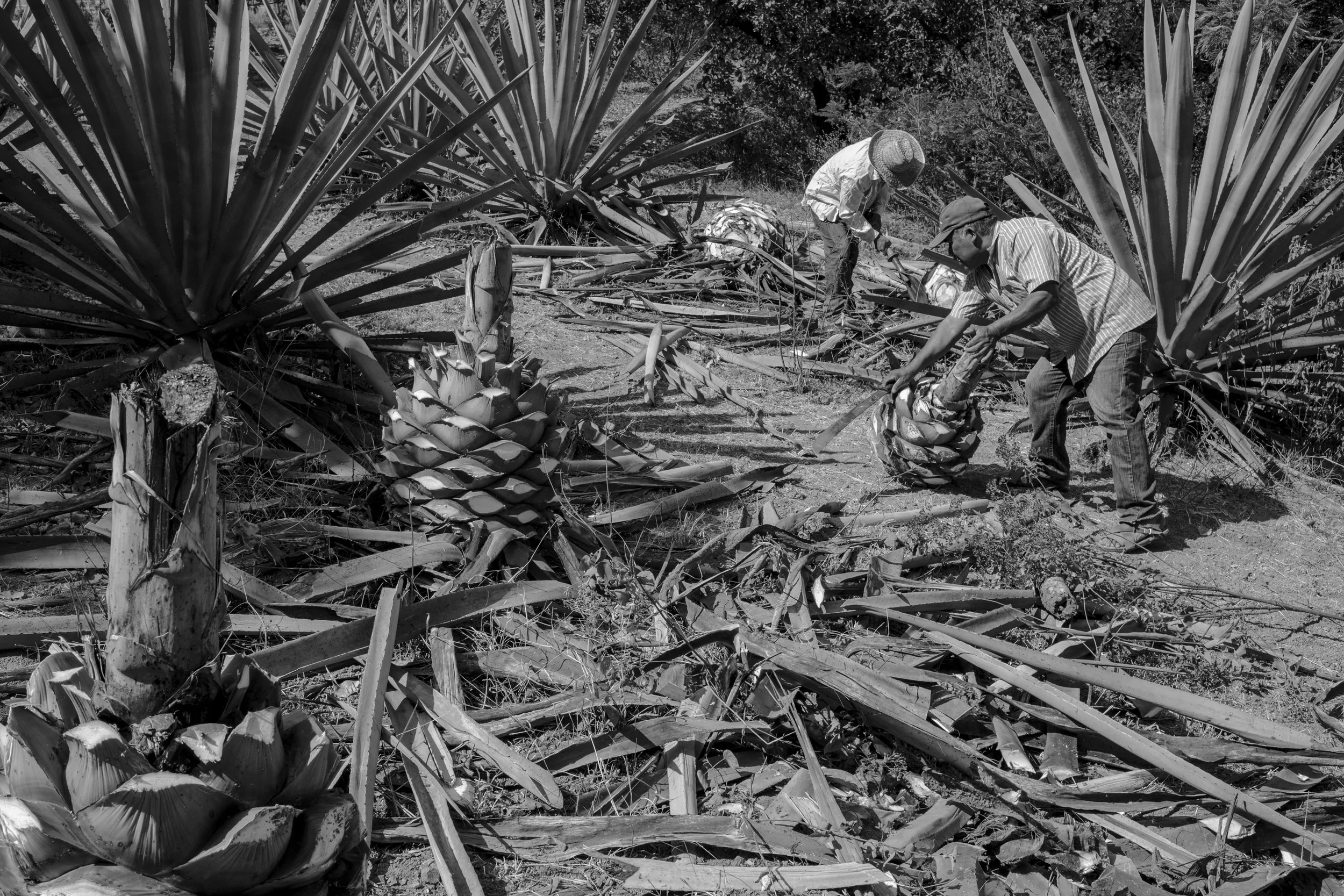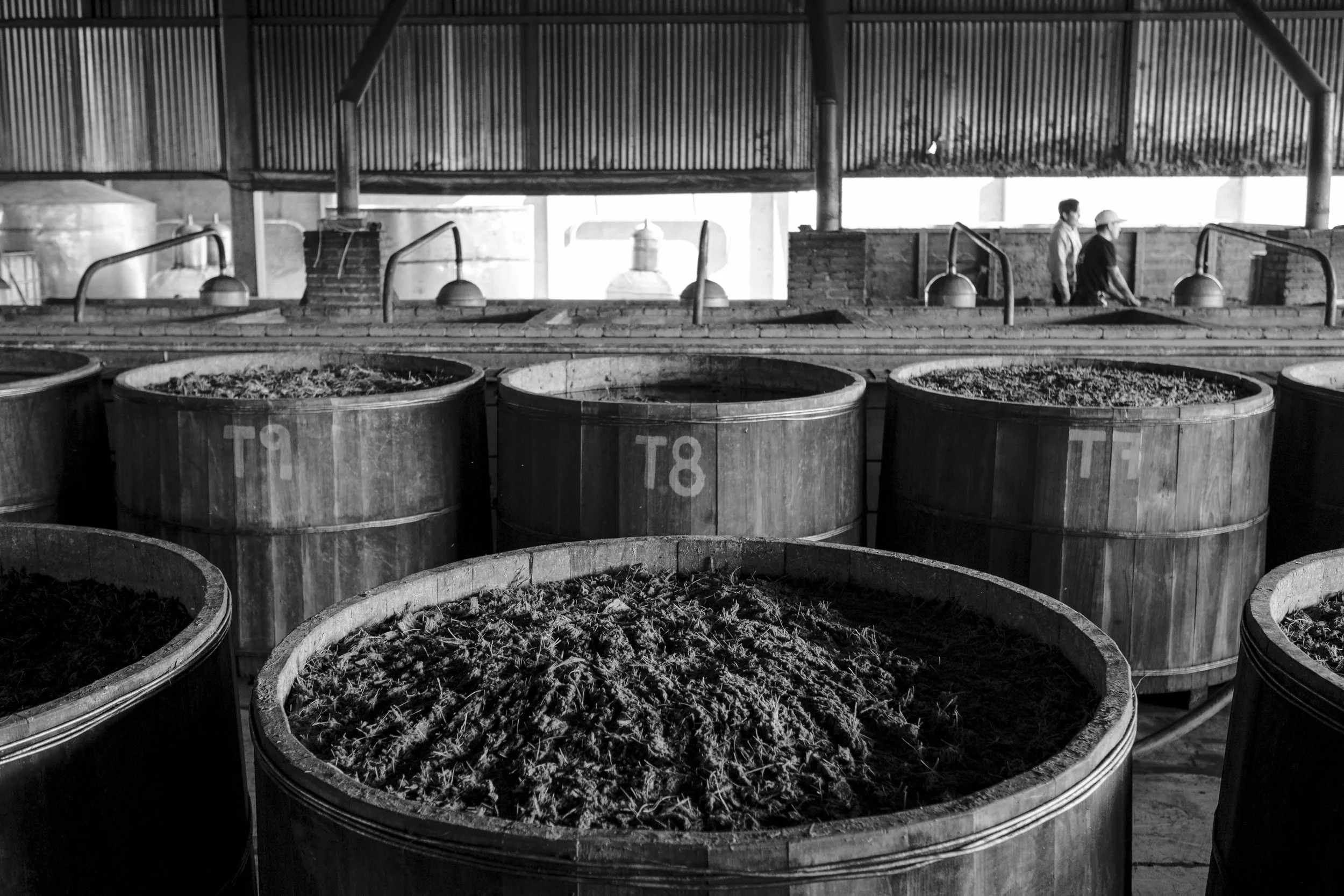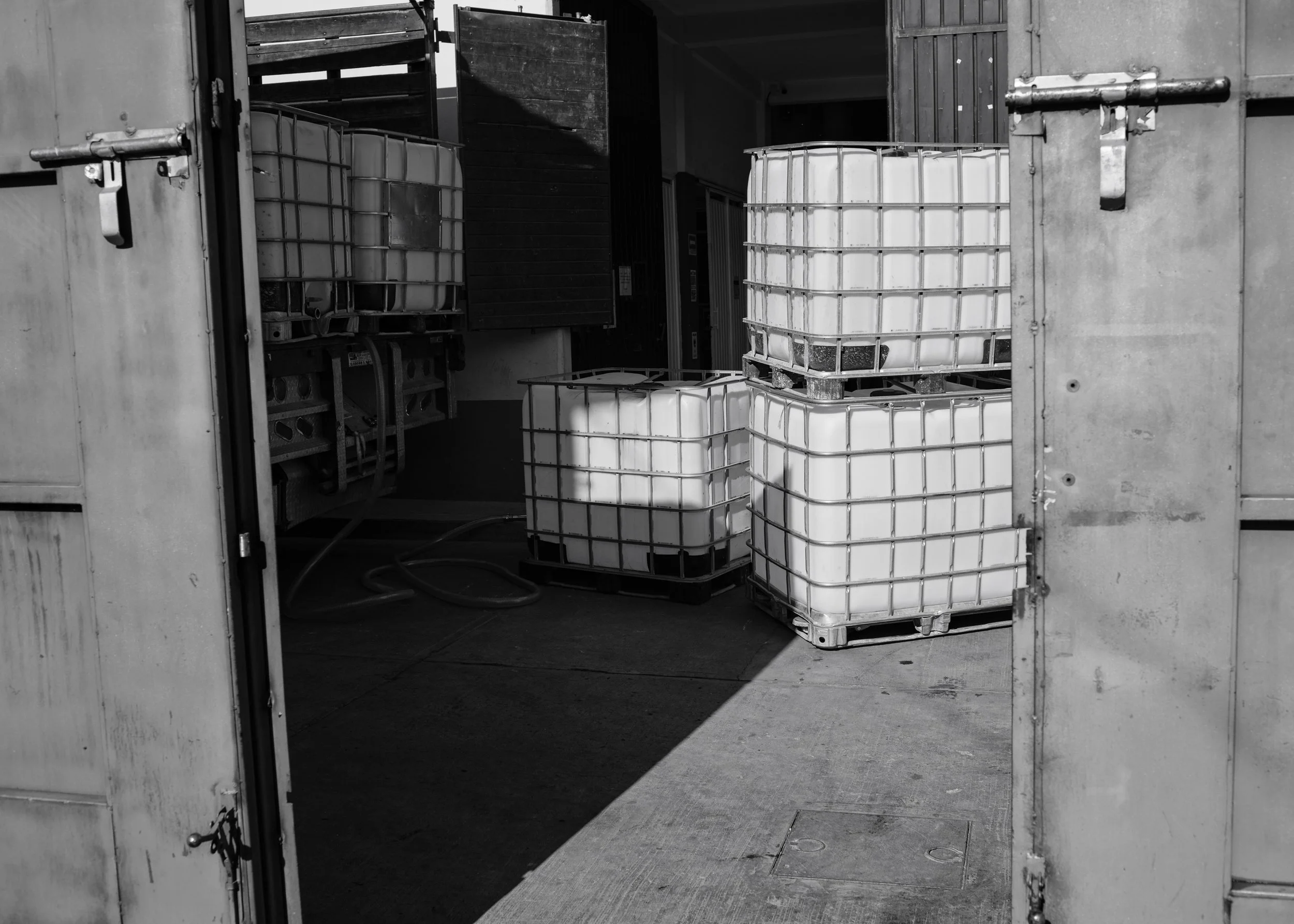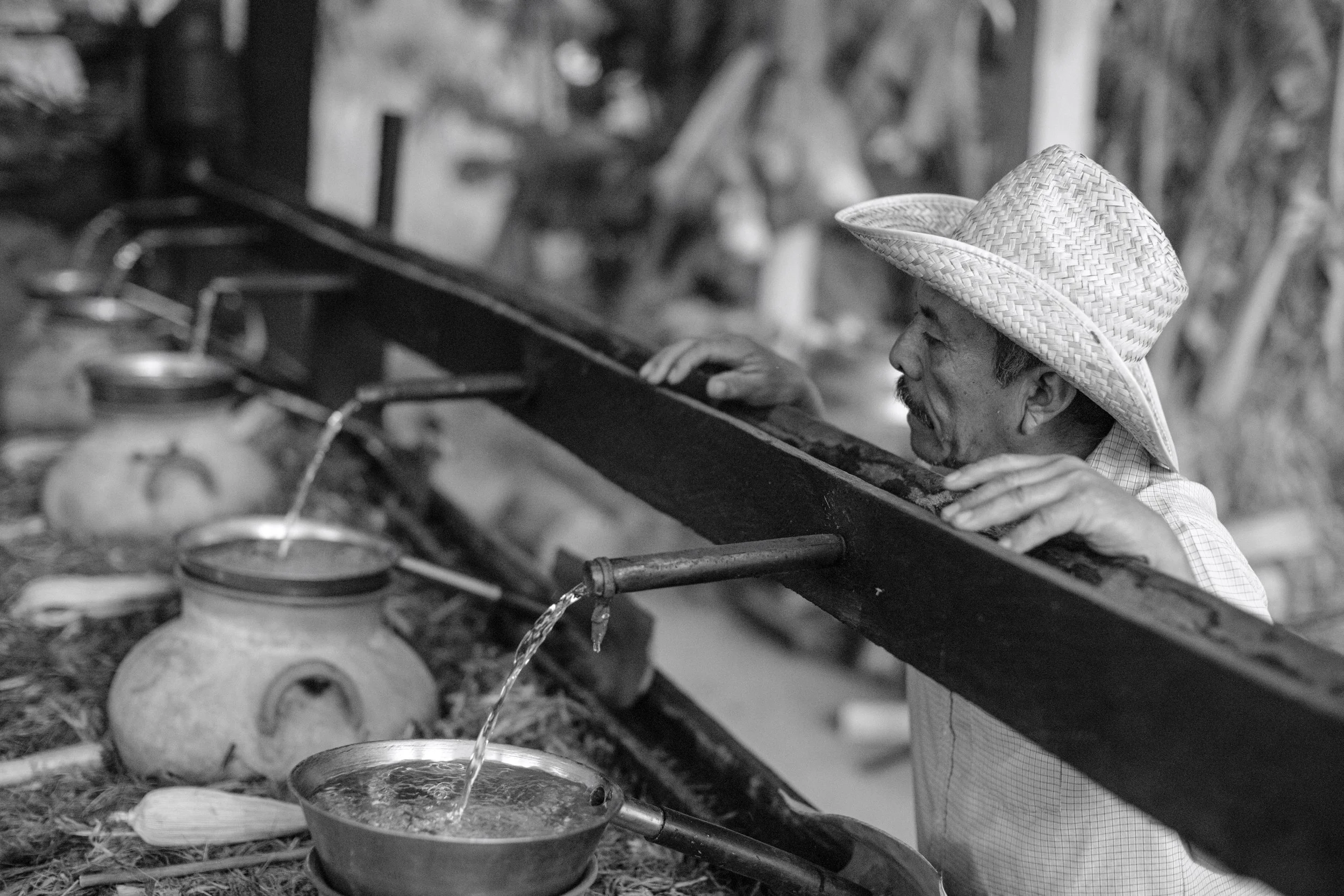A worker regains his balance atop a nearly eight-foot mound of cooking agaves at a palenque owned by Del Buen Agave in Santiago Matatlán, Oaxaca, Mexico on January 31, 2022.
A worker regains his balance atop a nearly eight-foot mound of cooking agaves at a palenque owned by Del Buen Agave in Santiago Matatlán, Oaxaca, Mexico on January 31, 2022.
Maestro mezcalero Orlando Altamirano Aragón surveys his agave fields located in the hills above Santa María Zoquítlan, Oaxaca, Mexico, on December 7, 2021. The Altamirano family has been making mezcal here for three generations, and Orlando Altamirano Aragón says his family owns and cultivates the land "for five hills in each direction”.
Maestro mezcalero Orlando Altamirano Aragón surveys his agave fields located in the hills above Santa María Zoquítlan, Oaxaca, Mexico, on December 7, 2021. The Altamirano family has been making mezcal here for three generations, and Orlando Altamirano Aragón says his family owns and cultivates the land "for five hills in each direction”.
Manuel García moves a Piña into the back of his truck at the family’s agave fields outside of San Dionisio Ocotopec, Oaxaca, Mexico on December 15, 2021. Piñas are the heart of the agave and contain the sugars needed to make mezcal.
Manuel García moves a Piña into the back of his truck at the family’s agave fields outside of San Dionisio Ocotopec, Oaxaca, Mexico on December 15, 2021. Piñas are the heart of the agave and contain the sugars needed to make mezcal.
Manuel García moves a Piña into the back of his truck at the family’s agave fields outside of San Dionisio Ocotopec, Oaxaca, Mexico on December 15, 2021. Piñas are the heart of the agave and contain the sugars needed to make mezcal.
A worker moves bagasso, the cooked agave fibers left over from producing mezcal, from a distillation tank at a palenque in Santiago Matatlán, Oaxaca, Mexico on December 3, 2021. Santiago Matatlán is colloquially known as the ‘World Capital of Mezcal',’ and produces more of the spirit than any other municipality in Mexico.
Manuel García moves a Piña into the back of his truck at the family’s agave fields outside of San Dionisio Ocotopec, Oaxaca, Mexico on December 15, 2021. Piñas are the heart of the agave and contain the sugars needed to make mezcal.
Manuel García moves a Piña into the back of his truck at the family’s agave fields outside of San Dionisio Ocotopec, Oaxaca, Mexico on December 15, 2021. Piñas are the heart of the agave and contain the sugars needed to make mezcal.
Manuel García moves a Piña into the back of his truck at the family’s agave fields outside of San Dionisio Ocotopec, Oaxaca, Mexico on December 15, 2021. Piñas are the heart of the agave and contain the sugars needed to make mezcal.
Agave fields along the road to Santiago Matatlán, Oaxaca, Mexico on January 31, 2022.
Maestro mezcalero Maximiliano “Serafín” García Gerónimo stands on a rusted wheel that he uses as a step stool at his palenque outside of San Dionisio Ocotopec, Oaxaca, Mexico on December 3, 2021.
Third-generation maestro mezcalero Ángél Cruz Robles rests in his palenque after loading wood into the horno, the large pit where he cooks agave, in Villa Sola de Vega, Oaxaca, Mexico on December 11, 2021. Situated next to a mountain spring considered sacred by Mexican Catholics, Cruz says the holy water and the minerals it contains are vital to the quality of his ancestral mezcal.
A new production facility for Del Buen Agave under construction in Santiago Matatlán, Oaxaca, Mexico, on December 2, 2021. Carlos Méndez says he plans to install an additional 140 tinas over the next two years, increasing production capacity by more than 200 percent.
A worker harvests agave in Santiago Matatlán, Oaxaca, Mexico on February 5, 2022.
Flavia Luís Morelos, Manuel García’s wife, prepares a meal of prickly pear cactus soup at the family’s palenque outside of San Dionisio Ocotopec, Oaxaca, Mexico on December 15, 2021.
María Elena Muñoz Ramírez makes ollas de barro, the large clay stills used to distill fermented agave into mezcal at her workshop in Atzompa, Oaxaca, Mexico on December 6, 2021.
A worker tends to rows of tinas full of fermenting agave at an industrial-scale facility owned by Del Buen Agave in Santiago Matatlán, Oaxaca, Mexico, on December 2, 2021.
Manuel Santaella stands next to a mural of his grandfather who began the family business of building copper alambics by hand, which are used to distill fermented agave into mezcal, at his workshop in Ocotlán de Morelos, Oaxaca, Mexico on January 30th, 2022. According to Santaella, his business produces 80 percent of all copper products used to make Mezcal in the state of Oaxaca. Demand for his products has increased dramatically since before the COVID-19 pandemic, he says, with new brands regularly placing large orders as they set up production facilities in Oaxaca.
Maestro mezcalero Maximiliano “Serafín” García Gerónimo harvests Agave Angustifolia, the plant used to make the Espadín variety of mezcal, at his agave fields outside of San Dionisio Ocotopec, Oaxaca, Mexico, on December 15, 2021.
Maximiliano “Serafín” García Gerónimo and his son, Manuel García, harvest agaves at their fields outside of San Dionisio Ocotopec, Oaxaca, Mexico on December 15, 2021. The García’s have a small father and son production that provides for their family of ten people who share a house in San Dionisio Ocotopec.
Rows of Tinas rest at a Del Buen Agave production facility in Santiago Matatlán, Oaxaca, Mexico on December 2, 2021. Del Buen Agave produces more than 60,000 liters of mezcal each month and is one of the largest producers of artisanal mezcal in the state of Oaxaca.
Large containers of mezcal are unloaded at a Del Buen Agave bottling facility in Santiago Matatlán, Oaxaca, Mexico on Jan 31, 2022. Carlos Mendéz says the business has grown substantially in recent years by buying batches of mezcal from smaller producers and blending them together to resell to large brands like José Cuervo.
Maesto mezcalero Carlos Méndez Blas, owner of Del Buen Agave, holds a hollow gourd, or jícara ,containing aerated mezcal at his palenque in Santiago Matatlán, Oaxaca, Mexico on December 2, 2021. To determine the alcohol content of a batch of mezcal, maestro mezcaleros aerate the liquid by sucking it into a hollow reed and allowing it to drain into a jícara. The maestro determines the alcohol content by observing the amount of time that the bubbles remain on the surface— the longer they remain, the higher the alcohol content of the mezcal.
Miguel Ángel Cruz Ríos, father of Ángel Cruz Robles, looks over the distillery at his family’s palenque in Villa Sola de Vega, Oaxaca, Mexico on December 11, 2021. The Cruz family uses traditional clay stills to produce ancestral mezcal.


